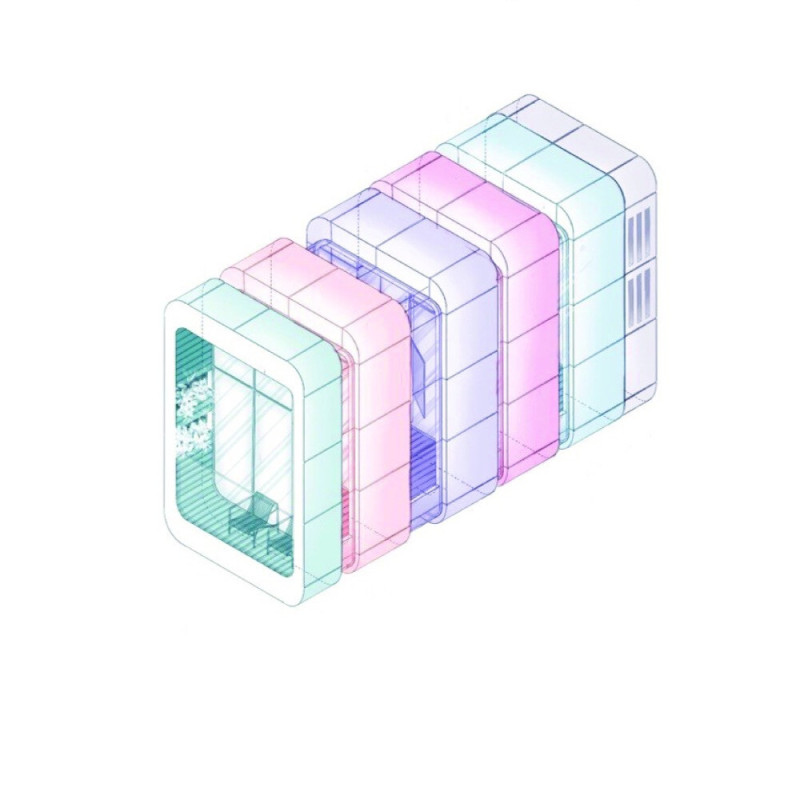5 key facts about this project
At first glance, the architectural design reflects a harmonious relationship with the environment. The façade employs a mix of sleek glass and warm timber, presenting an inviting yet professional appearance. This choice of materials not only emphasizes transparency and openness but also grounds the building in a local context, where natural elements are valued. The external envelope of the project features large windows that provide ample natural light while also offering sweeping views of the surrounding landscape, promoting a connection between indoor and outdoor environments.
In terms of functionality, the layout has been thoughtfully crafted. The ground floor serves as a public-facing area, housing cafes and retail spaces designed to encourage foot traffic and community engagement. This level is designed to be active and welcoming, acting as a connector between the street and the building's interior. Above this, the upper levels are dedicated to residential units that have been designed with a variety of layouts ranging from single-bedroom apartments to larger family homes. This mix caters to diverse needs, ensuring the building appeals to a wide demographic – from young professionals to families.
Unique design strategies play a pivotal role in the success of this project. One noteworthy aspect is the incorporation of green roofs and terraces, which not only provide residents with outdoor space but also contribute to the building’s sustainability objectives. These green elements help to improve air quality, support biodiversity, and enhance the overall aesthetic of the urban space. Additionally, integrated rainwater harvesting systems are designed into the architecture, showcasing a commitment to environmental stewardship while helping manage water resources effectively.
Another significant approach is the emphasis on flexibility within the design. The architectural layout allows for easy reconfiguration of spaces to accommodate changing needs over time. This adaptability is particularly important in urban settings, where the landscape of community requirements can shift. The project also emphasizes accessibility, with thoughtful inclusion of features that ensure all areas are accessible to individuals with various mobility needs.
In exploring the interior spaces, the design continues to reflect a focus on comfort and functionality. Open floor plans maximize the use of space and encourage communal interaction, while strategically placed walls and furniture allow for both privacy and connectivity. The choice of interior finishes and materials complements the exterior, as warm wooden elements are used alongside contemporary fixtures to create a cohesive and inviting atmosphere.
The architectural designs are not only aesthetically pleasing but are also grounded in practicality. Sustainable practices have been embedded throughout the project, ensuring energy efficiency through the use of high-performance insulation, energy-efficient lighting, and building systems designed for optimal performance. The bulk of the materials chosen reflects a commitment to durability and sustainability, including reclaimed wood, energy-efficient glass, and low-VOC paints, contributing to a healthier living environment.
As this project continues to evolve, it stands as a testament to thoughtful architecture that prioritizes community, sustainability, and adaptability. The unique elements and attention to detail not only enhance the building’s visual appeal but also enrich the lives of those who inhabit and interact with the space. Readers interested in delving deeper into the architectural intricacies will benefit from exploring the architectural plans, architectural sections, and various architectural ideas that outline the thoughtful design process behind this project. Such an examination offers valuable insights into the vision and execution of this remarkable architectural endeavor, confirming its significance in today’s urban landscape.


 Isabella Iacinschi
Isabella Iacinschi 






















